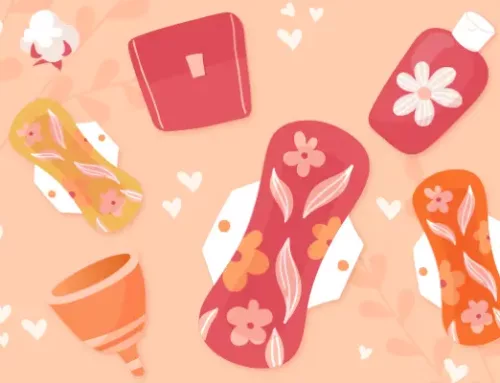I would say it’s a little bit of freedom. Freedom to jump, laugh, run, relax and just live a normal life. Without worry about leaks and stains.
Disposable protection haven’t been around for more than about 80 years, and wasn’t really in use until maybe the 1950’s or 60’s. Women just used folded fabric or crocheted pads up until then.
Now we’re moving back to washable materials. Which is great. We’re saving the environment, our money and it’s so much better for our skin (they breath and there are no chemicals involved).
So, what is reusable incontinence pads today? It’s basically the same as before, some kind of cloth. The biggest differences are the absorption capacity and fit. Today we have the luxury to be able to focus on comfort, price, capacity, fit and attractiveness. Let’s go a little bit further in to detail.

What is reusable incontinence pads?
Reusable incontinence pads are just what it sounds like, cloth pads with great absorption qualities that you can use as incontinence protection in your underwear, and wash to use time and time again. There are a couple of different fabrics to choose from, and a lot of colors and patterns.
Most of them have buttons that you snap underneath. Very easy to put in place and a durable solution. You can easily remove them without taking of pants or underwear.

Fabric selection - choose bamboo
There are mainly 3 types of fabrics used in reusable incontinence pads. Polyester, Bamboo and Cotton. The cloths are often a mix between different types of fabrics.
Bamboo is the absolut best choice of fabric for incontinence pads. It absorbs the fastest and is thin (which means you can add an extra layer of protection without it getting too bulky). A downside is that it can stain if not treated and loose softness with time.
There are also different absorbency levels. You can find pantyliners up to night pads to choose from. Unfortunately I haven't come across any reusable pad that is recommended for full bladder incontinence.
Styles & Designs
You can find numerous shapes for reusable incontinence pads, but they're pretty similar to each other and other disposable options. What is more fun is all the colors and patterns. A little bit of sunshine in an otherwise dark place.
Reusable incontinence pads are basically the same thing as reusable period pads, they absorb fluids and protect from leakage and stains.
FAQ
How do you clean reusable incontinence pads?
You can usually wash reusable incontinence pads in hot, warm and cold water, but if you want them to last as long as possible you should only wash them on cold cycles.
4 tips that will extend the life of a reusable pad
- Don't soak them (use a wetbag for storage)
- Wash in cold water
- Don't use fabric softeners
- No bleaching

How often should you change an incontinence pad?
You should change them when they start to feel wet. That's when it have reached its limit and can't absorb more pee. If you don't change it then it can start to leak, smell, and cause skin irritations. Always stay dry.
How much urine can a reusable incontinence pad hold?
This varies a lot. You need to check and test different brands. Some fabrics and designs can hold more fluids while others absorbs faster. There are usually different levels, ranging from pantyliners to night pads.
If you want tips on where to find great reusable pads, check out The 5 best reusable incontinence pads for women.
Is there an alternative to incontinence pads?
Yes, there is. Have you heard of reusable underwear. It's basically the same thing as a pad, just built in to your underwear. They're very comfortable and smart. If you want to know more, check out Incontinence underwear for women →
Can you make your own incontinence pads
Absolutely. You can find several awesome and easy to follow patterns on Etsy. For just a few bucks you can be set for life. Well, you need to get the right fabric and do the actual work. But then, you'll be set for life.






Leave A Comment